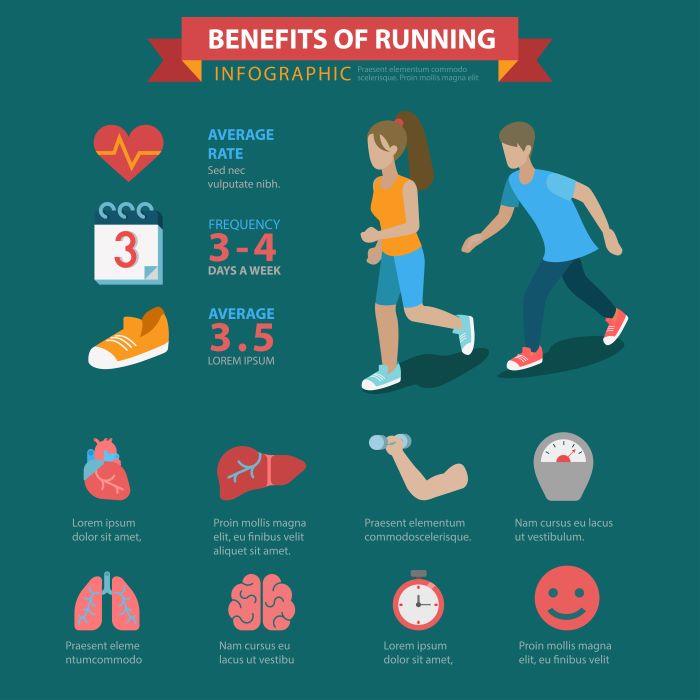Running fitness is not just about the ability to put one foot in front of the other; it’s a complex interplay of cardiovascular endurance, muscle strength, and mental resilience. Understanding running fitness is crucial for anyone looking to embrace the joy of running and achieve their personal fitness goals.
When we talk about running fitness, we refer to several key components:
- Cardiovascular Endurance: This is the ability of your heart and lungs to supply oxygen to your muscles during prolonged physical activity. Improved cardiovascular endurance allows you to run longer distances without fatigue.
- Muscle Strength: Strong muscles, particularly in the legs and core, support your running form and help prevent injuries. Strength training can enhance your running performance significantly.
- Flexibility: Adequate flexibility through stretching can improve your range of motion and reduce the risk of injury, making it essential for every runner.
- Mental Resilience: Running is as much a mental challenge as it is a physical one. Developing a strong mindset can help you push through difficult runs and stay committed to your training.
Understanding these components not only helps runners tailor their training but also fosters a deeper appreciation for the sport. Maintaining running fitness is vital for overall health and well-being, and it allows you to explore new trails and challenges with confidence. Visit our website to learn more and get started today! Click here. Embrace your running journey and discover how to maintain your fitness effectively.
Factors That Influence Running Fitness Loss

The loss of running fitness can be influenced by a variety of factors, and understanding these can help runners manage their training effectively. Here are some of the key elements that play a role in how quickly running fitness can decline:
- Duration of Inactivity: One of the most significant factors is the length of time a runner is inactive. Generally, after just two weeks of no running, significant declines in cardiovascular endurance and muscle strength can begin to occur.
- Age: As runners age, their bodies naturally experience a decrease in muscle mass and cardiovascular efficiency. Older runners may find that they lose fitness more quickly compared to younger counterparts.
- Training History: A runner’s previous training background can affect how quickly fitness is lost. Those with a solid base of consistent training may retain fitness longer than beginners.
- Nutrition: Proper nutrition plays a critical role in maintaining fitness. Poor dietary choices can lead to decreased energy levels and overall performance, accelerating fitness loss.
- Stress and Fatigue: Physical and mental stress can also impact running fitness. High levels of stress can lead to fatigue, which may result in reduced motivation to train and a subsequent decline in fitness.
By recognizing these influencing factors, runners can implement strategies to mitigate fitness loss, ensuring they remain prepared to hit the trails or the pavement whenever they choose.
Timeframes for Losing Running Fitness

Understanding the timeframes for losing running fitness can provide valuable insights for runners looking to maintain their endurance and performance levels. Generally, the rate at which fitness declines can be broken down into the following stages:
- 1-2 Weeks: During this period of inactivity, runners may notice a slight decrease in cardiovascular endurance. While the loss is minimal, it can be felt in terms of stamina during workouts.
- 3-4 Weeks: After three weeks without running, the decline becomes more pronounced. Studies suggest that aerobic capacity can decrease by approximately 10% during this time, which may lead to noticeable changes in running performance.
- 4-6 Weeks: By the four to six-week mark, a runner may experience significant fitness loss. Muscle strength and endurance can decline sharply, making it essential to return to training to regain lost fitness.
- 6+ Weeks: After six weeks, the impact of inactivity can be severe, with potential losses of up to 20% in aerobic capacity and considerable muscle atrophy. Recovery from this level of fitness loss may require a structured training plan to rebuild endurance and strength.
Recognizing these timeframes can motivate runners to stay active and engaged with their fitness routines, as even short breaks can lead to significant fitness declines.
How to Maintain Running Fitness During Breaks

Taking breaks from running can be necessary for recovery, injury prevention, or life’s unexpected demands. However, maintaining your running fitness during these breaks is crucial for a seamless transition back into your routine. Here are some effective strategies:
- Cross-Training: Engage in alternative forms of exercise such as cycling, swimming, or rowing. These activities can help maintain cardiovascular fitness while giving your running muscles a rest.
- Strength Training: Incorporating strength training can enhance your overall fitness and support your running performance. Focus on exercises that strengthen the core, legs, and hips to improve your running efficiency.
- Flexibility and Mobility Work: Utilize your break to improve flexibility and mobility through yoga or dedicated stretching routines. This can help prevent injuries and enhance your running form when you return.
- Active Recovery: Instead of complete inactivity, consider light activities like walking or easy jogging. This keeps your body moving without exerting too much pressure on your muscles.
- Nutrition: Maintaining a balanced diet rich in protein, healthy fats, and carbohydrates can support your muscle recovery and overall fitness. Stay hydrated and consider supplements if necessary.
Utilizing these strategies can help mitigate the effects of a break, ensuring that you return to running feeling strong and ready to conquer your fitness goals.
Rebuilding Your Fitness After a Layoff
After a layoff, whether due to injury, personal commitments, or other reasons, rebuilding your running fitness requires a thoughtful and patient approach. Here are essential steps to guide you back to your peak performance:
- Start Slow: Begin with shorter, less intense runs to allow your body to readjust. Gradually increase your distance and pace as you feel more comfortable.
- Set Realistic Goals: Establish achievable milestones that focus on consistency rather than speed or distance. Celebrate small victories to keep yourself motivated.
- Listen to Your Body: Pay attention to how your body responds to your workouts. If you feel discomfort or fatigue, don’t hesitate to modify your routine or take an extra rest day.
- Incorporate Variety: Mix in different types of workouts, such as interval training, hill workouts, and long runs, to keep things engaging and build diverse aspects of your fitness.
- Join a Community: Engaging with a running group or community can provide support, encouragement, and accountability, making the process of rebuilding more enjoyable.
Remember, rebuilding your fitness is a journey. With patience and persistence, you can regain your strength and enjoy the process of getting back to running.
Tips for Staying Motivated in Your Running Journey

Staying motivated throughout your running journey can be challenging, especially during tough times or after setbacks. Here are some effective tips to keep your spirits high and your feet moving:
- Set Achievable Goals: Establish both short-term and long-term goals that are specific, measurable, and realistic. Completing a local 5K or improving your pace can serve as motivational milestones.
- Track Your Progress: Use a running app or a journal to log your workouts. Seeing your progress over time can boost your motivation and help you stay committed.
- Find a Running Buddy: Partnering with a friend can make your runs more enjoyable and hold you accountable. Sharing the journey with someone else can reignite your passion for running.
- Mix Up Your Routes: Exploring new trails or routes can keep your runs fresh and exciting. Discovering scenic paths can make your workouts feel more like an adventure.
- Reward Yourself: Celebrate your achievements, no matter how small. Treat yourself to new gear or a relaxing day off after hitting a significant milestone.
Embrace the joy of running and the community that comes with it. Visit our website to learn more and get started today! Click here.


